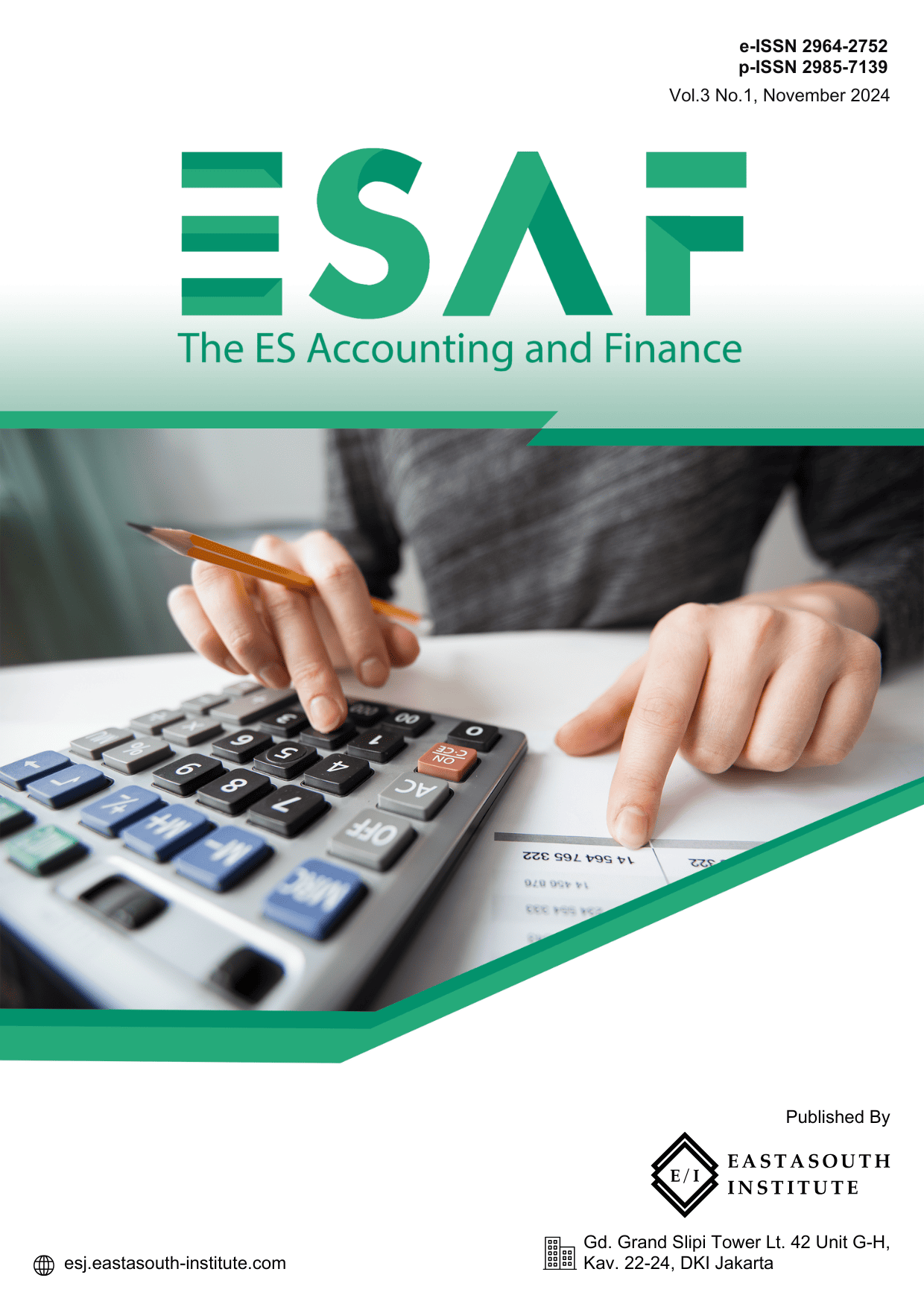The Influence of USDT Dominance on Volatility and Stock Market Performance in Indonesia
Main Article Content
Abstract
This study aims to analyze the influence of USDT (Tether) dominance on the volatility and performance of the stock market in Indonesia. USDT, as one of the largest stablecoins in the world, plays a significant role in the global crypto market and can impact various asset classes including stocks. This study uses time series data covering the period from 2018 to 2023, focusing on the Indonesian stock market index (IHSG) and USDT dominance in the crypto market. The methods used in this research include multiple regression analysis to examine the relationship between USDT dominance and IHSG movements, as well as Granger Causality tests to evaluate whether USDT dominance can predict changes in stock market volatility. The results show a significant relationship between increased USDT dominance and increased stock market volatility in Indonesia. Additionally, USDT dominance is found to have a predictive effect on the decline in stock market performance, especially in unstable market situations. These findings have important implications for investors and policymakers in Indonesia, given the increasing interconnection between the crypto market and traditional financial markets. This study recommends tighter monitoring of stablecoin movements like USDT and enhanced financial literacy among market participants to anticipate potential volatility impacts.
Article Details

This work is licensed under a Creative Commons Attribution-ShareAlike 4.0 International License.
References
J. Setiawan, “Pengaruh Kesehatan dan Keselamatan Kerja (K3) Serta Lingkungan Kerja Terhadap Kinerja Karyawan pada Pt. Pln (Persero) Up3 Cikokol,” Universitas Buddhi Dharma Tangerang., 2020.
M. Zimmerman, “Understanding stablecoins: An analysis of USDT and its impact on cryptocurrency markets,” Crypto Econ, vol. 15, no. 2, pp. 89–105, 2020.
Tether Limited, “Tether Limited,Tether Whitepaper,” 2014.
J. M. Griffin and A. Shams, “Manipulation in the Bitcoin Market,” J. Financ., vol. 75, no. 4, pp. 1913–1964, 2020.
S. B. Thapa, “Relationship between education and poverty in Nepal,” Econ. J. Dev. Issues, pp. 148–161, 2013.
J. D. Schwager, Market wizards, updated: Interviews with top traders. John Wiley & Sons, 2012.
L. Blume, D. Easley, and M. O’hara, “Market statistics and technical analysis: The role of volume,” J. Finance, vol. 49, no. 1, pp. 153–181, 1994.
J. M. Karpoff, “The relation between price changes and trading volume: A survey,” J. Financ. Quant. Anal., vol. 22, no. 1, pp. 109–126, 1987.
C. M. C. Lee and B. Swaminathan, “Price momentum and trading volume,” J. Finance, vol. 55, no. 5, pp. 2017–2069, 2000.
H. M. Markowitz, “Foundations of portfolio theory,” J. Finance, vol. 46, no. 2, pp. 469–477, 1991.
E. J. Elton, M. J. Gruber, S. J. Brown, and W. N. Goetzmann, Modern portfolio theory and investment analysis. John Wiley & Sons, 2009.
F. J. Fabozzi, F. Gupta, and H. M. Markowitz, “The legacy of modern portfolio theory,” J. Invest., vol. 11, no. 3, pp. 7–22, 2002.
W. F. Sharpe, “Capital asset prices: A theory of market equilibrium under conditions of risk,” J. Finance, vol. 19, no. 3, pp. 425–442, 1964.

